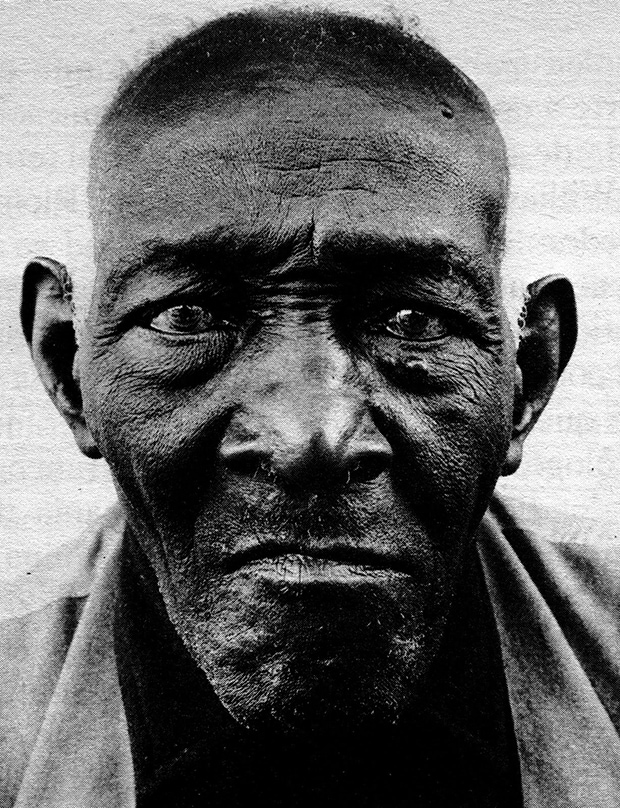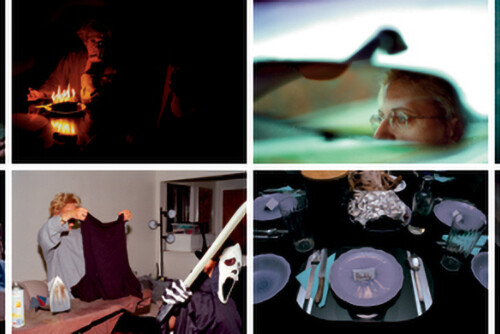This everyday photo-graphing endemic to slavery in the United States and to racial formation itself—this constant inscription and re-inscription of black and white and color—points toward an essence of photography somewhat different than that put forth by Roland Barthes in Camera Lucida, a text that still passes (notwithstanding the writings of Chela Sandoval and Fred Moten) as a definitive statement on the ontology of the photograph today. 1 To cut to the chase, in Camera Lucida Barthes sets out to determine “the essence of photography… at any cost” [italics mine] and determines finally that a photograph’s noeme, its unique quality, is precisely its chemically mediated indexical transmission of a moment of Reality—what he calls the photograph’s “that has been” aspect. This is the distinctive feature of photography itself.
But we must ask: what about the costs of this determination? For Barthes, the personal cost is twofold. First, there is the cost in pain. With Camera Lucida Barthes writes a book mourning for the loss of his beloved mother, the person with whom he was most closely, indeed intensely bonded. The photograph, a very specific photograph, is a way back to her. Indeed for Barthes the Winter Garden photograph of his mother (which is not reproduced in the text) provides a way to activate (but also register the loss of) a pre-verbal, para-psychoanalytic, extrasemiotic bond of unspeakable import. And then, beyond the pain of loss there is, in the rejection of semiotic and psychoanalytic explanations for the nature of his desire for his mother, the cost to Barthes’s extraordinary intellectual career; for the book is a kind of recantation, an admission that the realm of semiotics, which he spent the better part of his life elaborating, is not adequate for the deepest questions of love, of life, and of mediation. As he concludes, the indexical character of the photograph—its relation to reality, both in the instance of the photograph and as opened by the punctum as “the prick of the Real”—delimits and indeed exceeds the terrain of semiotics. However there is, in the determination of the essence of photography yet another cost, and for the rest of us perhaps, it turns out to be the most important one.
In Camera Lucida, Barthes provides a detailed description of his own experience of being photographed, during which he feels himself physically transform. “Now once I feel myself observed by the lens, everything changes: I constitute myself in the process of posing, I instantaneously make another body for myself, I transform myself in advance into an image.” 2 And then, “I don’t know how to work upon my skin from within.” 3 His account of becoming an object before the lens, of being separated from the world by the play of sociotechnical dynamics on his skin, precisely echoes—albeit in apparent ignorance—Frantz Fanon’s description in “The Fact of Blackness” of coming under the white gaze while in France: a description that read in its entirety, seems to suggest the colonial roots of existentialism and existentialist visuality. Here is just a brief excerpt:
And then the occasion arose when I had to meet the white man’s eyes. An unfamiliar weight burdened me. The real world challenged my claims. In the white world the man of color encounters difficulties in the development of his bodily schema […] On that day, completely dislocated, unable to be abroad with the other, the white man, who unmercifully imprisoned me, I took myself far off from my own presence, far indeed, and made myself an object. What else could it be for me but an amputation, an excision, a hemorrhage that spattered my whole body with black blood. 4
What, then, is the relationship between photography and modern racism? For it seems to me that something deeply hidden, repressed, or unthought inheres in the dispositif that is photographic technology. A thoroughgoing analysis of this dispositif would necessarily show connections between photography, racism, and political economy—three vectors of objectification—and ultimately should intersect with legal, psychoanalytic, imperialist, and sex-gender systems. After all, Barthes describes being photographed as if it were a process of proprietary alienation: “[T]he disturbance is ultimately one of ownership,” he says, and, “I invariably suffer from a sensation of inauthenticity. I am neither subject nor object but a subject who feels he is becoming an object: I then experience a microversion of death […]: I am truly becoming a specter” (13). Barthes also likens the captured light of the photograph to “a carnal medium, a skin I share with anyone who has been photographed.” 5
The large-scale archival project that these insights imply would be to establish that the parallel thus far limned between the mortification of the flesh before the lens and the mortification of the flesh under a white gaze—supported by, and indeed developing as a technology of the historical-economic violence of slavery and colonialism—are not merely analogous but are mutually constituting. A study proving that photography is itself a racial formation—following say, Goldsby, Ariella Azoulay, and Vilem Flusser, for example—would want to show that usage, form, and technical development went along a kind of simultaneous and mutually imbricated trajectory that was fully embedded in racial and racializing social practices. Vicente Rafeal’s work on census photography in the colonial Philippines as a technology of racialization comes to mind here, as well as the work of Malek Alloula, Jane Gaines, and bell hooks. 6 Each of the three latter writers explores the imbrication of photography in regimes of racist violence. Goldsby’s suggestions that the images produced also structure the meaning of sight allows us to see that the development and iterations of photographic knowledge—as well as the incorporation of that knowledge into the further development and use of the apparatus—are marked by practices of racial violence. As a modest foray into what is a potentially vast undertaking, we can show here that these parallel and seemingly autonomous regimes of racial formation, on the one hand, and photographic visibility on the other, are mutually constituitive in Barthes’ work. If this is the case, then the “essence of photography” has for many decades meant the disavowal of racism.
In Camera Lucida, Barthes makes a case for the metasemiotic “madness” of the photograph and rhetorically generates a meaningful—that is, semiotic—context for the dramatic eruption of the Real itself. He stages the emergence of “the essence of photography” as the indexical “that has been,” as well as the extremely influential theories of “the studium,” or photographic genres along with their necessarily all-too-familiar (and for Barthes, ultimately uninteresting) avenues of meaning, and of “the punctum,” which is rendered as “the prick of the Real,” “the wound,” “the puncture” of the merely semiotic by the Real—itself activated, in Barthes’ view, by certain photographs. What is crucial here is that for Barthes to produce this reality effect—that is, for him to produce these programs of apprehension—the majority of the images he uses to do this work in Camera Lucida are photographs of slaves and racialized others. This striking fact is somehow very often overlooked, as students at art schools everywhere proceed as if they were learning about a technology and not about a mode of sociality. Indeed, textual analysis of Camera Lucida shows that slavery, race and, ethnicity became the privileged tropes—the apparatus—with which to figure “the essence of photography,” for Barthes, “at any cost.” Slavery and race become the rhetorical figures, the discursive, and arguably material media for the derivation of the supposedly ontological character of a visual technology. Indeed one might say that by making racialized others the stepping stones leading to the essence of a technology, Barthes subsumes and finally disappears the historical realities of race, ethnicity, and slavery (Jews, blacks, Latin Americans, Eastern Europeans) in order to make the ahistorical reality of photography appear. At the very least, we can show that in the presumed illumination of Camera Lucida, racialization is something like the unconscious of the essence of photography. Indeed the troping and subsequent disappearing of racial difference for “purely” epistemological purposes may well be the most “universal” gesture here—the essence, if you will, of a whole tradition’s way of knowing by signifying the other.
For Barthes, the unique quality of the photograph, its that-has-been-ness, along with the ability of the punctum to puncture the merely meaningful and disrupt the normative function of the sign, imbues the photograph with a radical semiotic instability. However Barthes does less with the instability unleashed (instantiated) by the photograph than we might hope. For example, he writes that, “since every photograph is contingent (and thereby outside of meaning) photography cannot signify (aim at generality) except by assuming a mask,” 7 He then regards the Richard Avedon portrait entitled William Casby, Born a Slave, and all-too-summarily concludes his observations with the thought that “the essence of slavery is here laid bare: the mask is the meaning, insofar as it is absolutely pure.” 8

Barthes inclusion and cursory treatment of the Avedon photo do more than give slavery short shrift, they make slavery appear only to make it disappear again. “Society, it seems, mistrusts pure meaning […] Hence the photograph whose meaning is too impressive is quickly deflected; we consume it aesthetically, not politically.” 9 Ironically, to lay bare the essence of slavery, the photograph and therefore Barthes must be in “mask” mode—that is, on the side of meaning and of society, of semiotics. This “essence of slavery” is neither named nor described. Rather, its meaning conveniently dispensed with, the photograph opens the way for further (aesthetic) remarks on the inherent characteristics of the photographic medium. One suddenly suspects that the trajectory of the text—a striving to represent the essence of photography by replacing obscure projections with a lucid Real accomplished by signifying through racialized representations—is precisely a way of not talking about slavery and is, in fact, a displacement, a method of disappearing the history and with it, the logistics of perception that really produced the image of William Casby and perhaps in certain respects, all photographic images. It being understood, of course, that a political meaning of this sort would subsequently vitiate ostensibly value-neutral aesthetic inquiry, forever. But Barthes treats the Casby photograph as a studium, which allows him to proceed with the analysis of the essence of photography in his famous degree-zero prose.
- See Chela Sandoval, Methodology of the Oppressed (Minneapolis: U of Minnesota P, 2000) and Fred Moten, In the Break: The Aesthetics of the Black Radical Tradition, (Minneapolis: U of Minnesota P, 2003).[↑]
- Roland Barthes, Camera Lucida: Reflections on Photography, trans. Richard Howard (New York: Hill and Wang, 1982) 10.[↑]
- Barthes 11.[↑]
- Frantz Fanon, Black Skin, White Masks, trans. Richard Philcox (New York: Grove, 2008) 113.[↑]
- Barthes 81.[↑]
- See Vicente Rafael, White Love and Other Events in Filipino History (Durham: Duke UP, 2000); Malek Alloula, The Colonial Harem, trans. Myrna Godzich and Wlad Godzich (Minneapolis: U of Minnesota P, 1986); Jane Gaines, Contested Culture: the Image, the Voice and the Law (Chapel Hill: U of North Carolina P, 1991).[↑]
- Barthes 34.[↑]
- Richard Avedon, William Casby, Born a Slave, Barthes 35.[↑]
- Barthes 36.[↑]



